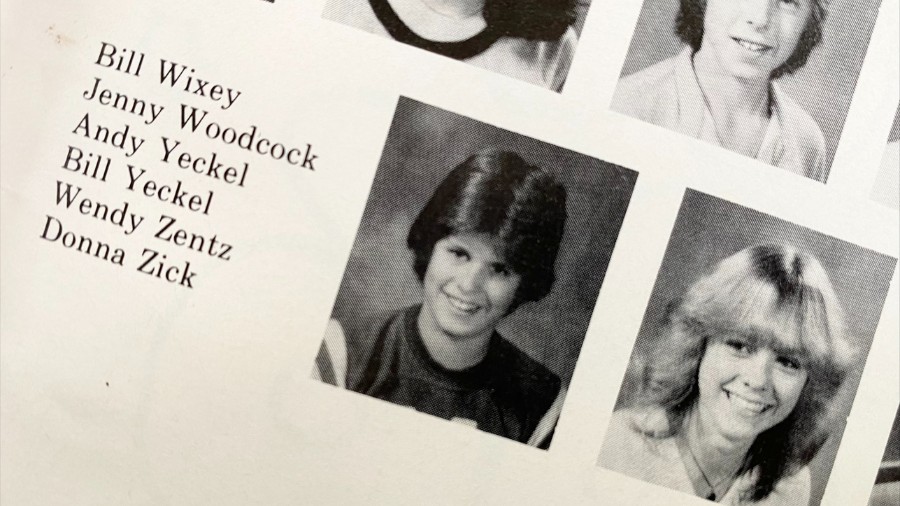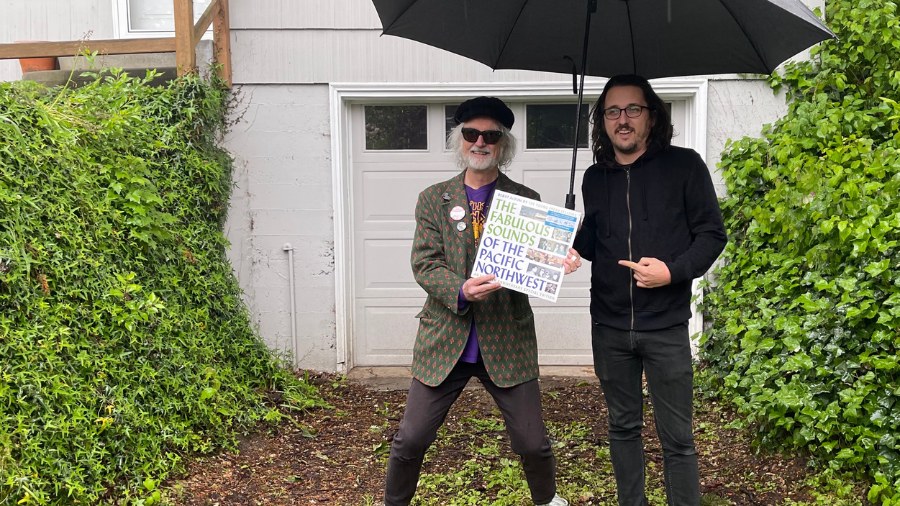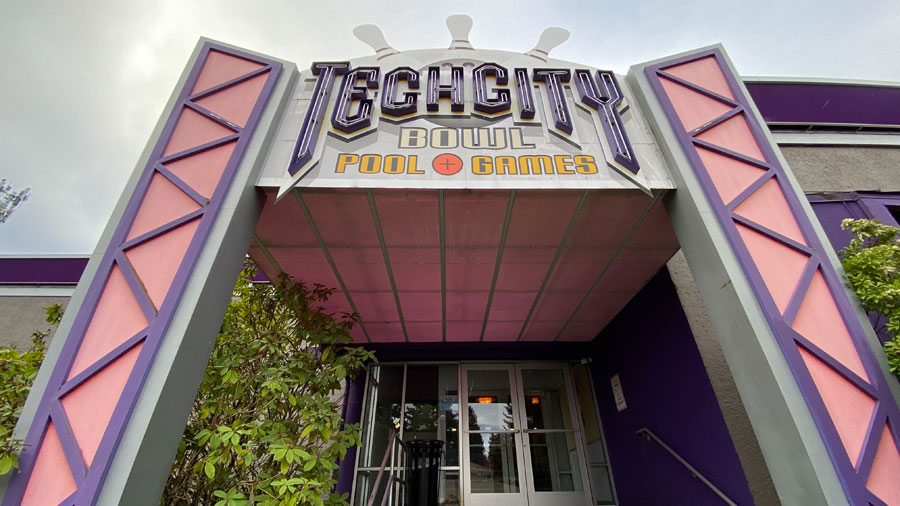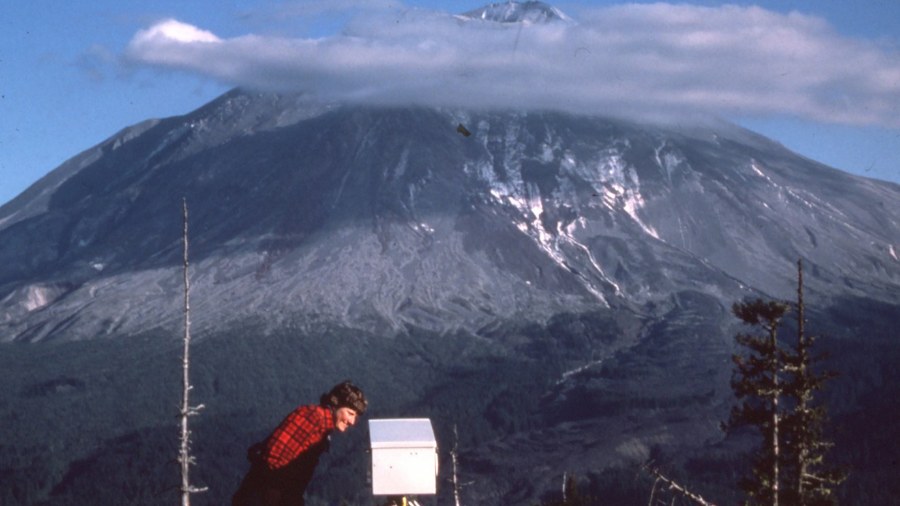Pacific Science Center making temporary changes to historic reflecting pool
Mar 13, 2024, 9:24 AM | Updated: 9:33 am
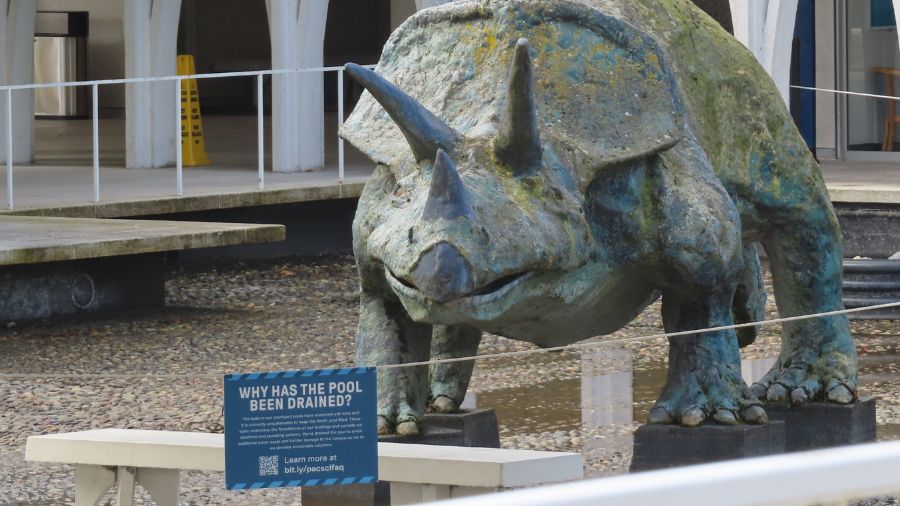
Are the Pacific Science Center pools going extinct like the dinosaurs? The north pool is leaking and was drained in 2023; it will soon become home to a temporary art or plant installation. (Feliks Banel/KIRO Newsradio)
(Feliks Banel/KIRO Newsradio)
In February 2023, Pacific Science Center leadership shocked local preservationists when they floated a plan to fill in the reflecting pools of their historic courtyard at Seattle Center with soil and native plants. After public outcry, those plans got put on hold for some additional public process, and a summary of findings from that process are about to be released.
Leading the effort on the public process for what’s become known as the Courtyard Project is Mädchen Petrie, Vice President of Finance and Operations for Pacific Science Center. Petrie told KIRO Newsradio there have been multiple meetings, surveys and focus groups since last summer to find out what current barriers stand in the way of better serving traditionally underserved groups.
As many local history buffs know, Pacific Science Center is housed in what was built for the 1962 Seattle World’s Fair as the “United States Science Pavilion,” a series of box-like buildings, surrounding an elegant courtyard with platforms and stairs, distinctive arches, and shallow pools of water.
The buildings and pools were designed by Seattle-born Japanese-American architect Minoru Yamasaki in a style that came to be called “Space Age Gothic.” Elements in the Science Pavilion design created by Yamasaki would be carried forward to his most famous work: the late, great World Trade Center in Manhattan. The Seattle Center facility was a designated city landmark in 2010.
When Science Center staff made their presentation to the Seattle Landmarks Preservation Board (LPB), they said the shallow pools are leaking badly and need a minimum investment of $17 million to repair. One option they were considering, staff told LPB members, was to do away with the water in the south pool completely – that’s the pool farthest from the entrance from Seattle Center grounds – and fill it in with soil to create a meadow for native plants.
Not surprisingly, there was significant pushback and public outcry over the proposal. And so, Pacific Science Center took a step back and launched what they called a “community engagement process” to reach beyond grumpy historic preservationists and connect with audiences and communities not currently being served, or who are currently being underserved, by Pacific Science Center programs and facilities.
When KIRO Newsradio spoke with Mädchen Petrie a few days ago, she said that the survey and focus group participants they spoke to as part of the process were not asked specifically about the future of the pools or about preferences for preservation or for making major alterations.
“We did not directly ask” about the pools, Petrie said. “We were trying as much as possible to have really open-ended questions as we went out to the community. So our questions were things like, ‘What would make you feel more welcome?’ ‘What would you like to stay in this space?’ ‘What would you like to change in this space?’”
More from Feliks Banel: ‘Garbage Goat,’ ‘Governor Evidence’ mark 50 years post-Spokane Expo ’74
The methodology, Petrie explained, was to step back and consider the whole package of the Science Center rather than just one of the iconic physical features. KIRO Newsradio listeners may remember that in an unscientific Twitter poll posted by the radio station a year ago (when what became “X” was still called Twitter), 70% of respondents were in favor of restoring the pools and keeping them filled with water.
As far as what features community members told Pacific Science Center they wanted to keep or what they wanted to change, Petrie says a summary will be made public in the near future and staff will also share plans with the Landmark Preservation Board. Though no date has been set for the plans’ release or for the LPB meeting, Petrie offered a preview.
“There’s a great call for more engaging content in the space from a lot of our focus groups,” Petrie said. “They like programming and interactivity, which is going to really help us with the programming that we bring into the space. They also want a space that is comfortable, and has places to sit and relax to eat.”
“They want this to be like a community space,” Petrie said.
What this appears to mean is that there is no clear direction for the future of the pools which Pacific Science Center is willing to share. However, Mädchen Petrie did reveal that one proposal related to the Courtyard has already emerged from the community engagement process, and that it might be acted on sooner rather than later.
As it currently stands, on the north side of Pacific Science Center, which is the side that connects directly to Seattle Center grounds and which is the side from which most Science Center visitors enter, a steel fence and multiple ticket booths have stood for decades.
Petrie said that many people involved in the community engagement process described the ticket booths and fencing as “not welcoming or inviting.”
“There was a really strong call, it came through in the survey, as well as with some of the other groups that we spoke to, for a removal of the gate so that the Courtyard could just be openly accessible,” Petrie explained. “And that’s something that we are really seriously considering and may even be considering in the more near term than some of these larger changes that need to happen.”
If they do relocate the ticket booths and remove a roughly 40-foot stretch of fencing, it would make the Courtyard essentially open to the public without having to buy a ticket or be a Pacific Science Center member. This change would, more or less, restore the pedestrian access pattern that was in place during the World’s Fair.
More MyNorthwest History: When Washington and Oregon used vinyl records to attract tourists
Petrie says the fence removal and ticket booth relocation could happen as soon as sometime in the next year, which is well ahead of the rest of the Courtyard project, which she says is now likely delayed until 2027 and which is now more on the order of $30 million.
Petrie also said that the water leaking from the pools – which, by some accounts, is the original catalyst for all the focus on making changes to the pools – got worse last summer for the north pool. Last September, Petrie says, they stopped filling it with water and let it dry out. The north pool remains roped off, with warning signs installed to keep people from falling in.
In the short-term with that north pool now empty of water, Pacific Science Center is exploring two options for a temporary installation. Petrie won’t say specifically what those options are, but she says they hope to make a detailed announcement before the end of March, and then proceed with the installation before summer.
Pressed for hints, Petrie shared some basic details about the possible plans.
“I guess as a hint there’s really two kinds of main options that we’re toggling between,” Petrie said. “One is some sort of art installation, which I realize is very big [and] that could be almost anything, but it would be some sort of collaboration or partnership to develop some sort of art installation in this space. Or, we’re considering a way to introduce plants in some way in a more temporary fashion.”
With the Courtyard Project likely three years in the future, and interim use of the north pool for an art installation or to display plants, it’s hard to predict what impact this might have on public acceptance of more lasting major changes to the north pool. One school of thought says that once a temporarily drained pool has been home to art and/or plants for three years, it may be more likely to get public support for making such a use permanent.
Local preservation and preservation advocacy group Historic Seattle has been closely watching Pacific Science Center in the wake of the rollout of the fill-in-the-pool proposal. Eugenia Woo told KIRO Newsradio that Historic Seattle was briefed in December 2023 on the community engagement process by Pacific Science Center staff, but have not received any updates in the meantime.
It’s clear that Historic Seattle loves the original Minoru Yamasaki design and that they want to see the pools restored and the water returned on a permanent basis.
“Our position has been consistent,” Woo told KIRO Newsradio on Tuesday. “It’s a preservation perspective, and it’s not an unreasonable perspective. Not to say that there can’t be any changes, but they really need to be sensitive to the original design intent and not [make] such drastic change to it.”
You can hear Feliks every Wednesday and Friday morning on Seattle’s Morning News with Dave Ross and Colleen O’Brien, read more from him here, and subscribe to The Resident Historian Podcast here. If you have a story idea or a question about Northwest history, please email Feliks here.


